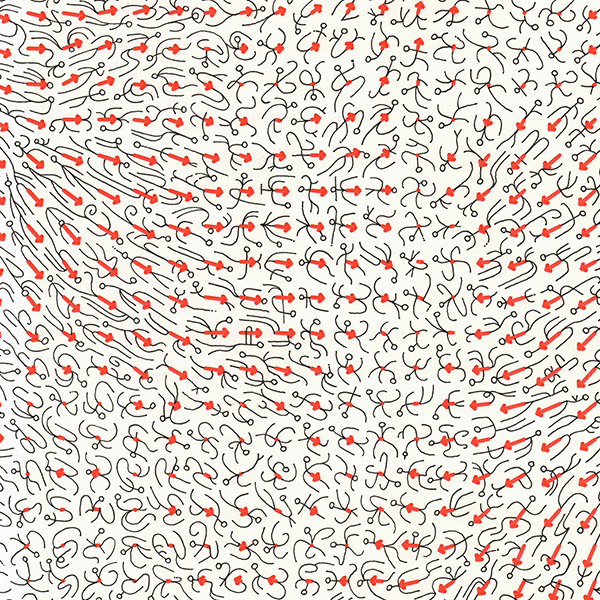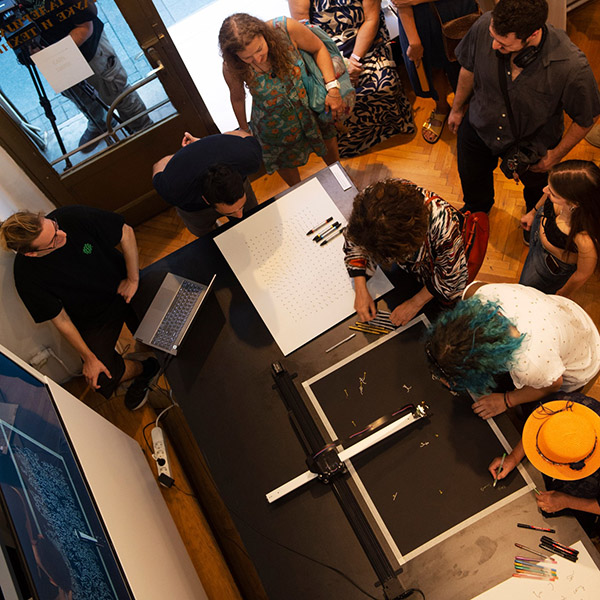A quarter of a century ago, the computer program Deep Blue defeated the world chess champion Garry Kasparov. After the match, Kasparov invented a new chess variant in which players are allowed to use computers. One pair of human and computer plays against another pair of human and computer. Human players use algorithms as a creative amplifier – to explore the space of combinatorial possibilities and find the most interesting moves – but they make decisions themselves. That's why Kasparov called this type of chess advanced or centaur chess.
Is the entire culture in which we live today centaur-like? The culture of social media, applications, large databases, computer games, and generative programs such as ChatGPT and Midjourney. The solo exhibition by Uroš Krčadinac raises these questions, playing with the idea of algorithmic co-creation – creativity that arises at the intersection of human and algorithmic, analog and digital, conscious and numerical.
Uroš and his robot draw together. They map chess moves, draw glyphs and stick figures, sketch the paths of systemic forces. In this way, new asemic scripts are created. New languages. New cartographies. Although they may seem devoid of meaning, like mere visual play, such scripts offer a new grammar for viewing and feeling the structures in which we live today.
The exhibition consists of four parts:
The first part of the exhibition is dedicated to the mapping of chess games. Each game forms a visual imprint, a small map that can help us better understand the interactive structure of the game. Serbian artist Era Milivojević first dealt with such maps. As a homage to Milivojević, Uroš's computer program invents new chess games and draws them on paper with a robotic hand.
The second part illustrates how much human effort is needed for an artificial neural network to learn to draw simple human-like figures. The algorithm is trained on a database of 31,300 human-like glyphs – which Uroš hand-drew for weeks and then digitally varied – and based on them, a statistical model of the distribution of points and lines is formed. This creates a program that draws new stick figures, a new pictographic language.
The third part is a story about the aesthetics of systems theory. We live within complex systems – organizational, informational, economic, media, ecological, geological, technological. Not only are we part of these systems, but we are these systems. However, it's difficult for us to grasp this. The abstract maps drawn together by Uroš and his robot – arrows drawn by the robot, stick figures by Uroš – speak to the interactive collaboration of all of us.
The fourth part of the exhibition is a live workshop in which people, collectively, draw and create new visual languages with the help of a robot. The fourth part is interactive. The only way to prevent the new centaur world from turning into a dystopia is for all of us to fight for our voice and our share in the development of intelligent systems.
So far, the exhibition has been held at the Gallery of Science and Technology of the Serbian Academy of Sciences and Arts in Belgrade and at the Creative Center Prostor in Novi Sad. ■







